 Has anybody tried this circuit? this circuit supposedly takes radio waves and turns them into a voltage. My questions are what are the peak voltages? and what current could i possibly hope to get if i run a 5v circuit with say a voltage regulator or a buck-boost converter
Has anybody tried this circuit? this circuit supposedly takes radio waves and turns them into a voltage. My questions are what are the peak voltages? and what current could i possibly hope to get if i run a 5v circuit with say a voltage regulator or a buck-boost converter
- 11
- 3
-
Please edit the title to reflect the content of your question. For example, "**Circuit for free energy from radio waves**" would give people in the know a very good idea of the nature of the question. – Transistor Jul 28 '16 at 21:27
-
2You can expect signals in the order of mV at best. You can then use a converter and be able to light a single LED. That is more or less the power you will get. – Claudio Avi Chami Jul 28 '16 at 21:31
-
7See @Andyaka's answer to [RF energy harvesting](http://electronics.stackexchange.com/questions/175121/rf-energy-harvesting/175123#175123) for a detailed answer to this question. – Transistor Jul 28 '16 at 21:47
-
@ClaudioAviChami Lighting an LED is overly optimistic. A typical small (3mm) LED takes roughly a milliwatt to (dimly) light up. That's many orders of magnitude higher than you could capture from RF. – Jul 28 '16 at 22:29
-
The peak voltages are subjective to your RF environment. – Voltage Spike Jul 28 '16 at 23:20
-
If you connected a high impedance (eg., piezo) earphone to +/- you would hear a mixture of AM radio stations. (One of +/- should be grounded.) – Keith McClary Jul 29 '16 at 00:16
-
This question is a good one even if the answers are not what is hoped for - close votes should reflect the question, not the answers. – Russell McMahon Jul 29 '16 at 00:21
2 Answers
you need a really a huge radio field to get some useable energy. It also depends to your antenna. In the end you have to be really close to the radio transmitter to get app. one volt.
can you tell on which frequency (radio field) you are working and/or where this will be used ?
- 46
- 2
The answers to SE question RF Energy Harvesting give a good idea of the magnitude of energy possible in this manner with a good design.
Energy levels will be low. Operation of an LED at low level may be possible in exceptional cases but in most instances power at the few milliWatt level would be doing well.
To optimise your design you should use:
A tuned circuit at the input which is matched to the aerial.
The circuit may be broadly tuned to a band of frequencies if there are a range of powerful transmitters available (eg AM broadcast band in some locations) but this reduces the available signal level from any one transmitter. Or ...
The circuit should be tuned to a specific transmitter's frequency to optimise voltage available. Regardless of the energy present a high Q unloaded circuit can provide substantial voltage - which is needed to achieve diode conduction and enough voltage to be somewhat easier to work with.
A "large" enough aerial
or
A tuned aerial.
A long wire untuned aerial may allow maximum energy collection from eg AM broadcast stations. A tuned / resonant aerial may maximise energy from specific sources - this is inly practical at either high HF band frequencies or at VHF and above (30 MHz up).
- 147,325
- 18
- 210
- 386